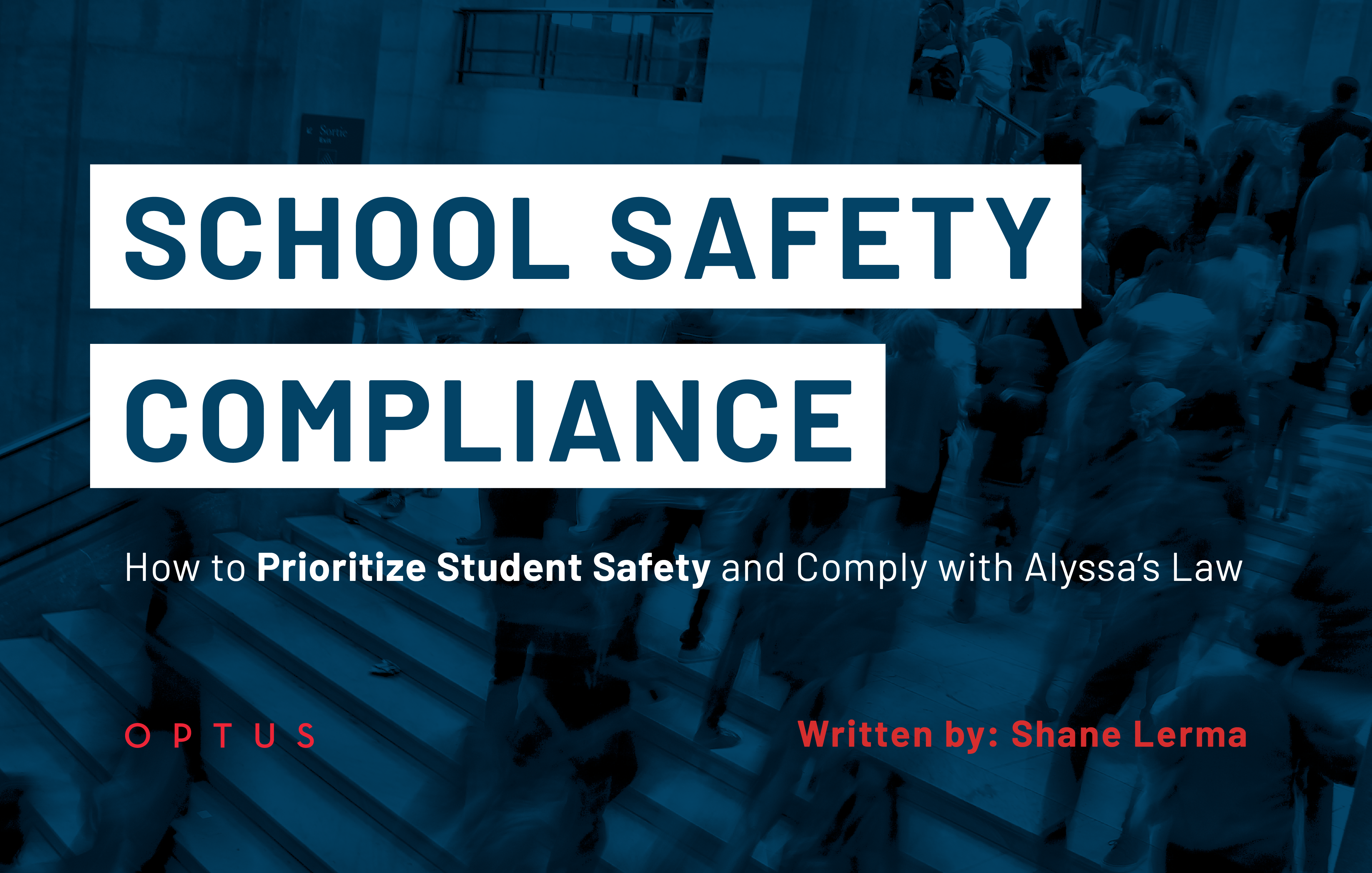Safety Compliance: How to Prioritize Student Safety and Comply with Alyssa’s Law.

School safety is a top priority for parents, educators, and policymakers alike. Alyssa's Law legislation has gained traction in several states, including Texas, Tennessee, New Jersey, New York, and Florida – with many others awaiting final adoption, including Georgia, Michigan, Arizona, Nebraska, Oregon, Virginia, and Massachusetts. Each state has its specific requirements for Alyssa’s Law compliance, but the overarching goal remains the same—to enhance the safety and security of students, staff, and school faculty members. In this article, we will explore the importance of Alyssa's Law compliance, the role of technology in achieving compliance, and the advancements in school safety technology beyond panic alarm buttons.
What is Alyssa's Law?
Alyssa's Law is a piece of legislation that aims to minimize response time and save lives during emergencies by requiring all public elementary and secondary schools to have a silent panic button or alarm system that can immediately alert law enforcement. By having a silent panic alarm system in place, schools can significantly improve their response capabilities during emergencies, such as active shooter situations, natural disasters, or any other life-threatening event.
The Role of Technology in Achieving Compliance
Technology plays a vital role in achieving Alyssa's Law compliance and enhancing overall school safety. While panic alarm buttons are a crucial component, advancements in school safety technology have expanded the range of available solutions. It is essential for schools to work with a technology advisor who can guide them in selecting the most appropriate safety technology for their specific needs.
A comprehensive school safety technology solution goes beyond panic alarms. A multitude of security advancements are available today, including but not limited to:
- Mobile Applications: Mobile apps can provide a convenient and accessible way for school staff to activate panic alarms and communicate with law enforcement in real-time. These apps can also allow for two-way communication, enabling staff to provide critical information about the situation, and perform school lock-down procedures immediately.
- Geo-Fencing & Location Tracking: GPS technology can be integrated into safety applications, allowing first responders to pinpoint the exact location of an emergency within the school premises using geofencing and digital mapping. This information is invaluable in expediting response times and ensuring that help reaches the right place quickly.
- Enhanced Video Surveillance: Unlike standard video surveillance, enhanced integration with video surveillance systems allows for real-time monitoring of school premises, enabling law enforcement to assess the situation more accurately before arriving on the scene.
- Mass Notification Systems: Effective communication is essential during emergencies. Mass notification systems can quickly disseminate critical information to students, staff, and parents, informing them and providing guidance on what actions to take.
By leveraging modern technological advancements, schools can create a more comprehensive and efficient safety infrastructure, ensuring compliance with Alyssa's Law while maximizing the safety and security of their facilities.
Alyssa's Law Compliance in Texas
Texas is one of the many states that has passed Alyssa's Law. The legislation requires all school districts and open-enrollment charter schools to provide silent panic alert technology in classrooms starting from the 2025-2026 school year. This means that schools in Texas need to take proactive measures to ensure they are Alyssa's Law compliant.
Schools in Texas can work with technology providers like Optus to find custom solutions that meet the specific requirements of Alyssa's Law. Optus understands the intricacies of school safety technology and can guide schools in selecting the right technological solutions to achieve compliance.
Customizable Security Solutions from a Trusted Technology Partner
Every school's safety needs differ, and school safety technology offers customizable solutions to cater to these unique requirements. Technology advisors specializing in school safety can provide expert guidance and assist in selecting the most suitable solutions for achieving compliance with Alyssa's Law. Their expertise ensures that schools have the right combination of technology tools to maximize safety and security.
When it comes to school safety technology, it is crucial to work with a trusted vendor-neutral advisor like Optus. Optus has the expertise and experience to provide custom physical and cybersecurity solutions tailored to the unique needs of each school. They can assist in implementing Alyssa's Law-compliant technology, offering a comprehensive and integrated safety system that goes beyond panic alarm buttons.
Contact Optus today to explore the range of school safety technology solutions and ensure compliance with Alyssa's Law while prioritizing the safety and security of your school community.
Disclaimer: This article is for informational purposes only and should not be considered legal advice.
About Shane Lerma:
Shane Lerma is a recognized expert in school safety technology, particularly with a focus on Alyssa's Law compliance. His expertise is evident from his role as Optus' Cloud Technology Advisor and his active involvement in webinars and discussions centered around school safety technology and emergency response systems. Shane's efforts are dedicated to ensuring schools are equipped with the best tools to comply with Alyssa's Law, which mandates silent panic alarms in schools, connecting them directly to law enforcement in emergencies. He advocates for real-time connectivity for swift responses, reduction in response time, seamless integration with existing security technology, interactive floor plans for enhanced situational awareness, and immediate alerts for targeted response efforts. Shane's extensive knowledge and involvement in bringing cutting-edge technology advancements to enhance emergency response systems and improve communication in crisis situations further showcase his expertise in the field of school safety technology.